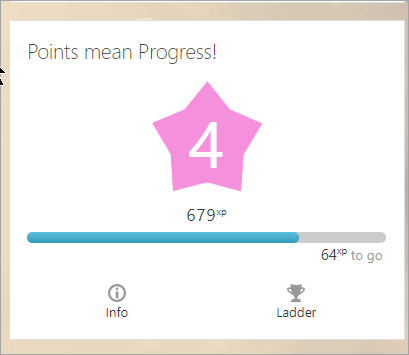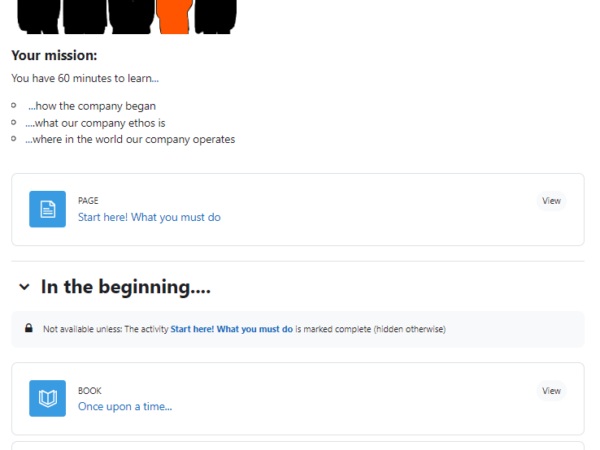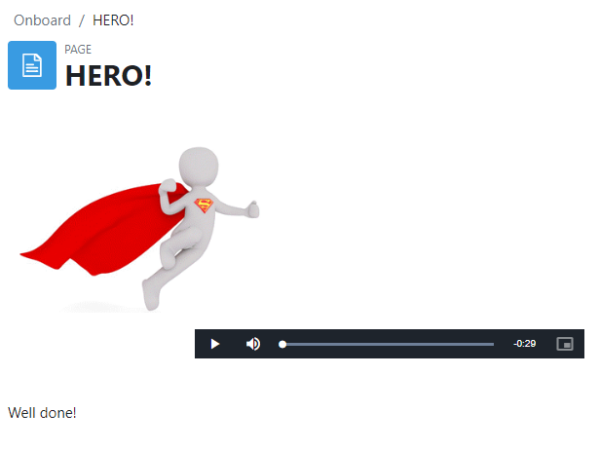Gamification is more than a passing trend, in recent years it has become a must-have feature for any successful LMS. Simply put, gamification adds game-design elements and mechanics into non-game environments. It can be used for a wide variety of purposes, from an online community or social media to a health app or online portfolio. Some of the most well known examples of gamification are points, badges and leaderboards. Through these tools, gamification digitally engages learners, motivating them to interact with the course content and achieve their goals.
What is educational gamification?
One area where gamification is a hugely popular tool is in education. Educational gamification involves using in-game principles and themes, such as earning virtual points for answering questions correctly or completing a task to advance to another level. Gamification provides attainable goals and targets to reach for, as well as a fun experience that helps the learner to retain more information. Just as standard games are designed to motivate the player, gamification engages the user with the learning materials.
Educational gamification involves using game-design elements, such as point scoring, peer competition, collaboration and scores to engage the learner. This helps the learner to remember new information and to test their knowledge. Receiving virtual rewards and recognition provides learners with a record of their learning, as well as a sense of achievement.
Educational gamification also makes it easier for the educator to track the learners achievements as it clearly demonstrates how the user’s abilities are developing as they progress through the course. This type of feedback is useful as it highlights which areas of the course the learners are finding easier or more challenging.
Benefits of gamification
Gamification is a key feature to incorporate into eLearning as it creates a full and effective learning experience. Through gamification, course content can borrow from the motivational, enjoyable and memorable components of standard gaming. Gamification incorporates an element of friendly competition, which can help to ensure learners remain driven throughout the course.
Other benefits of gamification for learners include:
- Increased retention: The repetitive nature of gamification increases retention of course content. The learner can practice and reinforce the information they have learned.
- Progress indicators: Gamification elements, such as points or a level progress bar, make learning visible for the learner and educator.
- Taking ownership: Students feel like they have more control over their learning.
- Creativity: Gamification provides the opportunity to think outside of the box and not just retain the information.
- An enjoyable learning experience: Gamification provides a more relaxed approach in regards to making mistakes and makes learning more fun.
Gamification for employees
Gamification also makes workplace learning and training more interactive and engaging for employees. Gamification elements can be added to employee onboarding and introductory training. Not only does gamification help employees to learn more effectively, it reduces employee turnover and builds an engaged workforce; this can be especially useful for a remote workforce.
Other benefits of gamification for employees include:
- Quantify employee learning: Gamification helps employees to find areas to work on for their improvement and career growth.
- Employee rewards: Rewards within gamification increase the likelihood of employees recalling their training and applying this within the workplace. It also helps to make the workplace fun and can decrease employee stress.
- Friendly competition: Gamification elements, such as interactive points-based leaderboards, can also help increase employee productivity and engagement.
- Job satisfaction: Employees get more job satisfaction when they feel they are making progress towards their goals. Gamification provides a sense of achievement and of progress.
- An evolving workforce: Gamification appeals to a younger workforce, especially for employers onboarding a digitally native workforce.
How can you apply gamification to eLearning?
Moodle LMS is flexible and can be fully customized with gamification elements in a simple and straightforward way. One great benefit of using Moodle as a gamification LMS is that it was built on a social constructivist pedagogy. These learner-centric principles make it easy to use common Moodle features to implement elements of gamification. Moodle includes many standard gamification features, such as badges, leaderboard, conditional release and H5P, which gives you access to plenty of interactive content.
There are also several plugins available to bring elements of gamification to your Moodle courses, such as Level Up XP, Game, Quizventure, Stash, Motrain and Mootivated and Block Game.
These plugins allow you to apply a variety of gamification techniques to your course content, for both an educational and workplace environment. Gamification elements that can be applied to your Moodle course include:
- Automatically attribute points based on your student actions.
- Display current level and progress towards next level to help progress learning.
- Congratulate students with notifications as they level up.
- View a leaderboard displaying student rankings.
- Customize the number of levels, the points they require and their appearance.
- Control over the points earned per action.
- Get an overview of students’ levels with the reporting function.
- Virtual coins that can be spent at the discretion of the user.
- Present quizzes and questions as interactive games.
How to get started
If you are unsure where to begin, it is a good idea to start small and incorporate some of the most well-recognized gamification elements. This could be a leaderboard system for your workplace training or a level progress bar for your students as they work through a module. Before implementing gamification elements, it is also important to learn about your audience. Think about what will motivate your specific audience, depending on if the elements are geared towards learners or employees. Consider the content of the course and build incentives that are tailored to their learning experience.
Once you have established some gamification elements, you can keep the course material fresh by periodically updating these elements. For example, refreshing the leaderboard or adding new challenges will mean the course content remains engaging to the learner. Gradually increasing the difficulty of the gamified elements will also help to keep the learner motivated and help to assess their understanding of the course as they progress.
Our team can assist you with incorporating gamification in your LMS and help you to tailor gamification elements for your learners specific needs, providing an engaging and effective learning experience.
Moodle Academy also runs a free Introduction to Gamification course, which covers the theory, set up and practice of gamification in Moodle. You can sign up for the course here.







